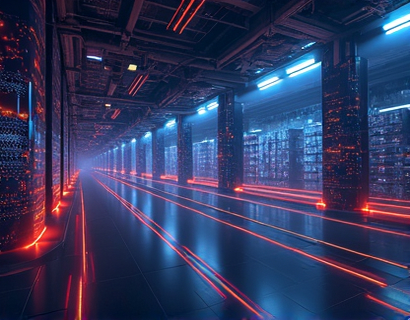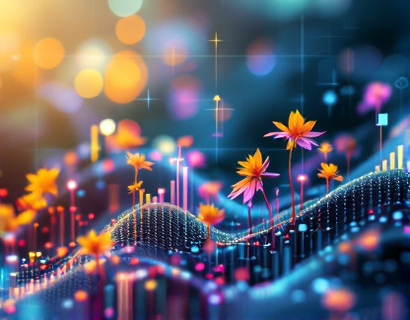Revolutionizing Aquaculture Businesses: The Power of Advanced Software Solutions
In the rapidly evolving world of aquaculture, business owners and managers face numerous challenges that can impact the success and sustainability of their operations. From managing complex supply chains to optimizing resource usage and ensuring compliance with regulatory standards, the demands are multifaceted. Advanced software solutions have emerged as a game-changer, offering a comprehensive suite of tools designed to streamline operations, boost productivity, and enhance overall efficiency. This article delves into the transformative impact of these software solutions, providing insights into how they can revolutionize the aquaculture industry.
Streamlining Operations with Integrated Software Systems
The core advantage of adopting advanced software solutions in aquaculture lies in their ability to integrate various aspects of business operations into a single, cohesive platform. This integration eliminates the need for disparate systems and manual data entry, reducing errors and saving valuable time. Key operational areas such as production management, inventory control, and financial tracking are seamlessly connected, allowing for real-time data access and analysis. For instance, a comprehensive software solution can track fish growth, monitor feed consumption, and manage water quality parameters all within one interface, providing a holistic view of the operation.
One of the primary benefits of integrated software is the enhancement of decision-making processes. With all relevant data centralized and easily accessible, managers can make informed decisions quickly. For example, real-time monitoring of water parameters can trigger alerts when conditions deviate from optimal levels, enabling prompt corrective actions. This proactive approach not only improves fish health and growth rates but also minimizes the risk of costly outbreaks and diseases.
Boosting Productivity through Automation and Optimization
Automation is a cornerstone of modern aquaculture software solutions, significantly boosting productivity by reducing manual labor and increasing efficiency. Automated feeding systems, for instance, ensure that fish receive the right amount of feed at the right times, based on factors such as water temperature, fish size, and growth stage. This precision feeding not only optimizes feed conversion ratios but also reduces waste, contributing to cost savings and environmental sustainability.
Additionally, software can automate routine tasks such as data logging, report generation, and inventory updates. This automation frees up staff to focus on more strategic activities, such as market analysis, business planning, and customer relationship management. By streamlining these tasks, aquaculture businesses can operate more efficiently, leading to higher productivity and better resource utilization.
Optimizing Resource Management for Sustainable Growth
Resource optimization is critical in the aquaculture industry, where water, feed, and energy are significant costs. Advanced software solutions provide powerful tools for managing these resources effectively. For example, water quality management modules can monitor and control parameters such as pH, dissolved oxygen, and ammonia levels, ensuring optimal conditions for fish health and growth. By maintaining ideal water conditions, businesses can reduce stress on the fish, leading to better growth rates and lower mortality rates.
Feed management is another area where software can drive significant improvements. By analyzing historical data and predicting future needs, software can optimize feed formulations and feeding schedules, reducing waste and lowering costs. This data-driven approach ensures that fish receive the precise nutrition they need without overfeeding, which can lead to water quality issues and increased expenses.
Energy management is also a key focus area. Software can monitor and control energy usage across various systems, from pumps and aerators to lighting and heating. By identifying inefficiencies and suggesting optimizations, these tools help businesses reduce energy consumption, lower operational costs, and minimize their environmental footprint. This not only contributes to sustainability goals but also enhances the overall profitability of the operation.
Enhancing Compliance and Regulatory Management
Compliance with local, national, and international regulations is a critical aspect of running a successful aquaculture business. Advanced software solutions offer robust compliance management modules that help businesses stay up-to-date with changing regulations and ensure adherence to industry standards. These modules can track regulatory changes, generate required reports, and provide audit trails, simplifying the compliance process and reducing the risk of penalties.
For instance, software can manage documentation related to water quality testing, fish health records, and environmental impact assessments. By maintaining organized and easily accessible records, businesses can demonstrate their commitment to sustainability and responsible practices, which is increasingly important to consumers and regulatory bodies alike. This proactive approach to compliance not only protects the business but also enhances its reputation in the market.
Improving Supply Chain Management for Better Outcomes
Effective supply chain management is essential for the smooth operation of aquaculture businesses. Advanced software solutions offer comprehensive tools to manage every aspect of the supply chain, from sourcing raw materials to distributing finished products. By integrating suppliers, logistics providers, and customers into a single platform, businesses can achieve greater visibility and control over their supply chain processes.
For example, software can track the procurement of feed and other inputs, ensuring that high-quality materials are sourced promptly and cost-effectively. It can also monitor the transportation of live fish, providing real-time tracking and alerts for any issues that may arise during transit. This level of visibility helps prevent delays and losses, ensuring that products reach the market in optimal condition.
Moreover, supply chain management modules can optimize inventory levels, reducing the risk of stockouts or overstocking. By analyzing demand patterns and lead times, software can predict future needs and adjust inventory accordingly, leading to more efficient operations and reduced costs. This optimization is particularly crucial in the aquaculture industry, where the perishable nature of products requires meticulous management.
Data Analytics for Informed Decision-Making
One of the most powerful features of advanced aquaculture software is its data analytics capabilities. By leveraging big data and advanced analytics, businesses can gain deep insights into their operations, identify trends, and make data-driven decisions. These insights can range from optimizing production schedules to forecasting market demand and assessing the financial performance of different business segments.
For instance, analytics can help identify the most profitable species or farming methods based on historical data and market trends. This information can guide strategic planning and investment decisions, ensuring that resources are allocated to the most promising areas. Additionally, predictive analytics can forecast potential challenges, such as disease outbreaks or market fluctuations, allowing businesses to take proactive measures to mitigate risks.
Data visualization tools within the software also play a crucial role in making complex data accessible and actionable. Dashboards and reports can present key metrics and trends in an intuitive format, enabling managers to quickly grasp the current state of the operation and make informed adjustments. This data-driven approach not only enhances decision-making but also fosters a culture of continuous improvement within the organization.
Customization and Scalability for Diverse Aquaculture Operations
Every aquaculture business is unique, with varying sizes, species, and operational requirements. Advanced software solutions are designed to be highly customizable and scalable, adapting to the specific needs of each business. Whether it's a small-scale freshwater farm or a large-scale marine operation, the software can be tailored to fit the unique workflows and processes of the business.
Customization extends to the user interface, allowing staff with different levels of technical expertise to navigate the system with ease. Training and support are typically provided to ensure a smooth transition, and ongoing updates ensure that the software remains compatible with evolving business needs and technological advancements. This flexibility ensures that businesses can grow and adapt without being constrained by their software infrastructure.
Enhancing Customer Satisfaction and Market Competitiveness
The impact of advanced software solutions extends beyond the internal operations of the aquaculture business to the customer experience and market competitiveness. By optimizing production processes and ensuring high-quality products, businesses can meet and exceed customer expectations. Consistent quality and reliability are key factors in building customer trust and loyalty, which are essential for long-term success.
Moreover, the ability to provide transparent and traceable information about the production process can be a significant differentiator in the market. Consumers are increasingly concerned about the origin and sustainability of the products they purchase. Advanced software can generate detailed traceability reports, showcasing the journey of the product from farm to table. This transparency not only enhances customer trust but also aligns with growing market trends towards sustainable and ethical practices.
In terms of market competitiveness, businesses that leverage advanced software solutions can operate more efficiently and cost-effectively, allowing them to offer competitive pricing while maintaining profitability. The ability to respond quickly to market changes and optimize operations ensures that these businesses remain agile and resilient in a dynamic industry.
Conclusion: The Future of Aquaculture is Software-Driven
In conclusion, the integration of advanced software solutions in aquaculture businesses represents a transformative shift towards greater efficiency, sustainability, and profitability. By streamlining operations, enhancing productivity, and optimizing resource management, these tools empower business owners and managers to overcome the challenges of a competitive market. The future of aquaculture is undoubtedly software-driven, and those who embrace these innovations will be well-positioned to thrive in the years to come.










































